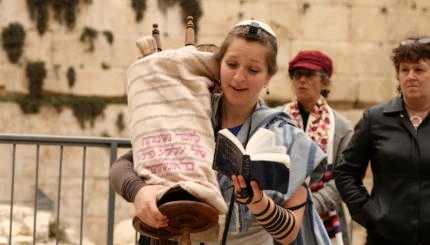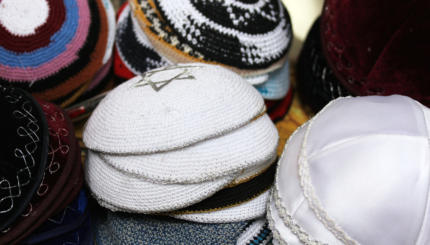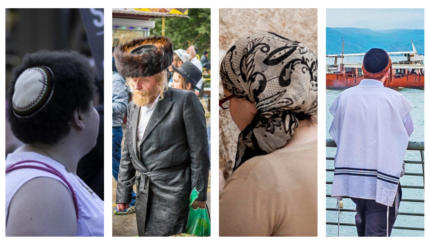A kippah (skullcap or yarmulke, pronounced “yamaka”) is a small hat or headcovering. In traditional Jewish communities only men wear kippot (the plural of kippah) and they are worn at all times (except when sleeping and bathing). In non-Orthodox communities some women also wear kippot, and people have different customs about when to wear a kippah — when eating, praying, studying Jewish texts, or entering a sacred space such as a synagogue or cemetery. The Reform movement has historically been opposed to wearing kippot, but in recent years it has become more common and accepted for Reform men and women to cover their heads during prayer and Jewish study.
There is no halakhic requirement to cover one’s head, but it is considered a sign of reverence for God. Keeping the head covered at all times has mystical significance, and for this reason some people cover their heads twice — a hat over a kippah, or a tallit (prayer shawl) over a kippah —while praying.
Kippot can be made out of many materials. In traditional Orthodox communities, men wear black velvet or silk kippot, often under hats. In Modern Orthodox, Conservative, and Reform communities it is common to see men wearing leather or crocheted kippot.
With your help, My Jewish Learning can provide endless opportunities for learning, connection and discovery.
tallit
Pronounced: tah-LEET or TAH-liss, Origin: Hebrew, prayer shawl.
halachic
Pronounced: huh-LAKH-ic, Origin: Hebrew, according to Jewish law, complying with Jewish law.
kippah
Pronounced: KEE-pah or kee-PAH, Origin: Hebrew, a small hat or head covering that Orthodox Jewish men wear every day, and that other Jews wear when studying, praying or entering a sacred space. Also known as a yarmulke.



